
Understanding the Problem
Having an electric treadmill stop moving when you walk on it can be incredibly frustrating, especially when you’re all geared up for a great workout. I remember the first time this happened to me—I had just started my session when, suddenly, the treadmill belt stopped dead in its tracks as soon as I began to walk. Not only did it interrupt my exercise routine, but it also left me scratching my head about what could be wrong.
This issue can stem from several underlying problems, ranging from simple belt alignment to more complex motor or electrical issues. It’s crucial to diagnose and fix the problem promptly to ensure your treadmill remains in good working order and to keep your fitness journey on track. In this guide, I’ll walk you through the common causes of this problem and offer practical solutions to get your treadmill back up and running smoothly.
Before we dive into troubleshooting, it’s important to understand that maintaining your treadmill properly can prevent many of these issues. Regular maintenance routines can save you a lot of time and hassle in the long run. So, let’s get started with identifying the common causes behind your treadmill stopping when you walk on it.

Common Causes for Treadmill Stopping During Use
Understanding why your treadmill stops moving when you walk on it is the first step in solving the problem. Here are some of the most common causes:
Belt and Deck Issues
- Belt Alignment and Tension: If the treadmill belt is not aligned correctly or if it’s too loose, it can stop moving when weight is applied. This is a common issue and relatively easy to fix.
- Belt Wear and Tear: Over time, the treadmill belt can become worn out, causing it to slip or stop moving. Inspect the belt for signs of wear, such as fraying or thinning.
- Lack of Lubrication: Treadmill belts need regular lubrication to move smoothly. A lack of lubrication can cause the belt to stick and stop moving when you walk on it.
Motor and Electrical Problems
- Motor Brushes: Worn-out motor brushes can cause the treadmill to stop functioning properly. The brushes are responsible for conducting electricity to the motor, and if they are worn, the motor might not receive enough power.
- Electrical Connections: Loose or faulty electrical connections can disrupt the power supply to the treadmill motor, causing it to stop suddenly. Check all wiring and connections for any signs of damage or looseness.
- Control Board Issues: The control board manages the treadmill’s functions. If it’s malfunctioning, it can cause the treadmill to stop unexpectedly. This issue might require a more in-depth inspection or professional repair.
Understanding these common causes can help you pinpoint the problem with your treadmill. Next, I’ll guide you through diagnosing belt and deck issues, which are often the easiest to identify and fix.
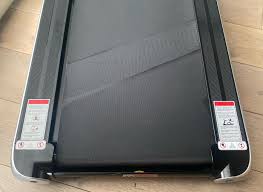
Diagnosing Treadmill Belt and Deck Issues
If your treadmill stops when you walk on it, one of the first areas to check is the belt and deck. Here’s how you can diagnose and address these issues:
Checking for Belt Alignment and Tension Problems
- Visual Inspection: Start by visually inspecting the belt. Look for signs of misalignment or slackness. The belt should be centered on the deck and should not be sagging.
- Manual Adjustment: If the belt is misaligned or loose, you can adjust it manually. Most treadmills have adjustment bolts at the back of the deck. Use these bolts to center the belt and ensure it has the correct tension.
- Test the Treadmill: After making adjustments, test the treadmill by walking on it slowly. Ensure the belt moves smoothly and does not shift or stop.
Lubricating the Treadmill Belt
- Choose the Right Lubricant: Use a lubricant specifically designed for treadmills. Silicon-based lubricants are commonly recommended.
- Apply the Lubricant: Lift the belt slightly and apply the lubricant to the deck underneath. Spread it evenly across the deck surface.
- Distribute the Lubricant: Turn on the treadmill and walk on it at a slow speed to distribute the lubricant evenly. This helps reduce friction and allows the belt to move smoothly.
Replacing a Worn-Out Belt
- Inspect for Wear: Check the belt for signs of wear, such as fraying edges, thinning areas, or visible damage. If the belt is severely worn, it needs to be replaced.
- Purchase a Replacement Belt: Find a replacement belt that is compatible with your treadmill model.
- Install the New Belt: Follow the manufacturer’s instructions to install the new belt. Ensure it is properly aligned and tensioned.
For those looking to track their fitness progress during these troubleshooting sessions, the Fitbit Versa 4 Fitness Smartwatch is a fantastic tool. It not only tracks your heart rate and steps but also offers various exercise modes to keep you motivated.
By addressing these belt and deck issues, you can often resolve the problem of your treadmill stopping when you walk on it. Next, we’ll look at how to address motor and electrical problems that could be causing the issue.
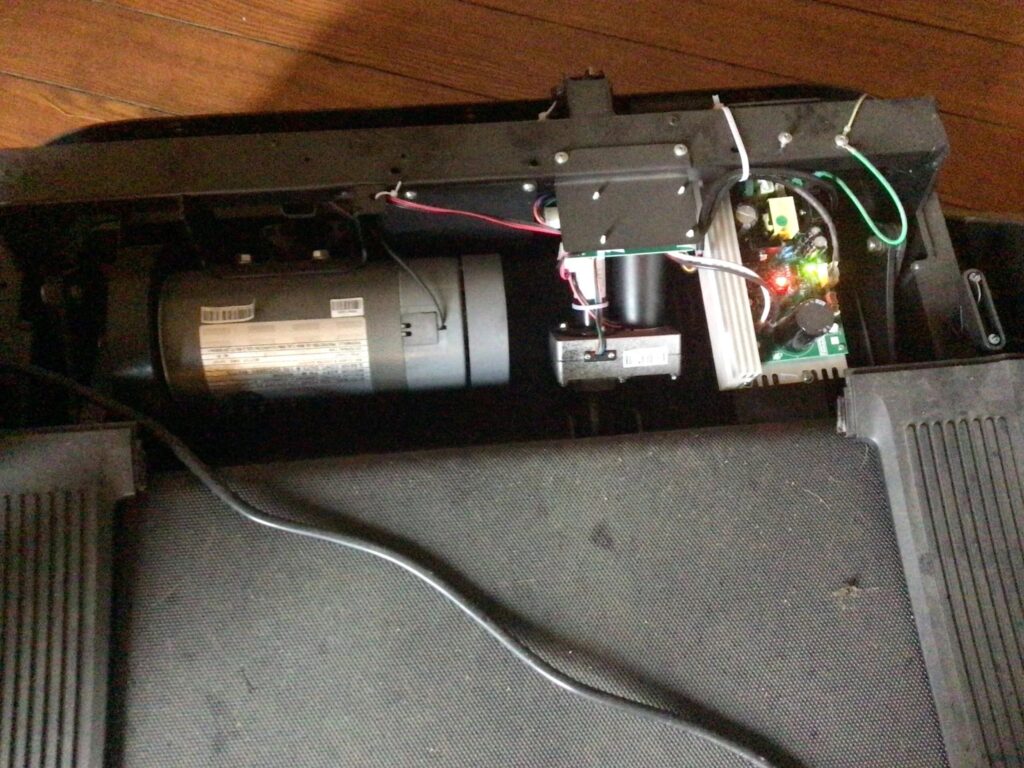
Addressing Motor and Electrical Problems
If you’ve ruled out belt and deck issues, the next step is to look at the motor and electrical components of your treadmill. Here’s how to diagnose and address these problems.
Inspecting the Motor and Wiring
- Power Off and Unplug: Before inspecting the motor, ensure the treadmill is powered off and unplugged from the electrical outlet to avoid any risk of electric shock.
- Remove the Motor Cover: Use a screwdriver to remove the motor cover. This will give you access to the motor and its components.
- Check the Motor: Inspect the motor for any visible signs of damage, such as burnt components or broken parts. Listen for unusual noises when the treadmill is running, as these can indicate motor issues.
- Inspect Wiring and Connections: Check all the wiring and electrical connections for signs of wear, loose connections, or damage. Ensure all wires are securely connected and there are no exposed wires.
Replacing Motor Brushes if Necessary
- Locate the Motor Brushes: The motor brushes are typically found on either side of the motor. They are small, carbon blocks that conduct electricity to the motor.
- Inspect the Brushes: Remove and inspect the motor brushes. If they are worn down or damaged, they need to be replaced. Worn brushes can cause poor motor performance and lead to the treadmill stopping.
- Purchase Replacement Brushes: Ensure you buy the correct type of motor brushes for your treadmill model.
- Install New Brushes: Insert the new brushes into the motor and secure them in place. Reassemble the motor cover and test the treadmill to see if the issue is resolved.
Ensuring Proper Electrical Connections
- Reconnect Loose Wires: If you found any loose or disconnected wires during your inspection, reconnect them securely. Use electrical tape if necessary to secure connections.
- Test the Power Supply: Ensure the treadmill is plugged into a functioning outlet. Use a multimeter to check the power supply and ensure it’s providing adequate voltage to the treadmill.
- Check the Circuit Breaker: If the treadmill stops suddenly, it could be due to an overloaded circuit. Check the circuit breaker and reset it if necessary.
For an added energy boost during your troubleshooting and subsequent workouts, consider using Cellucor C4 Sport Pre Workout Powder. This pre-workout supplement provides the energy and focus you need to power through both your repair tasks and your fitness routines.
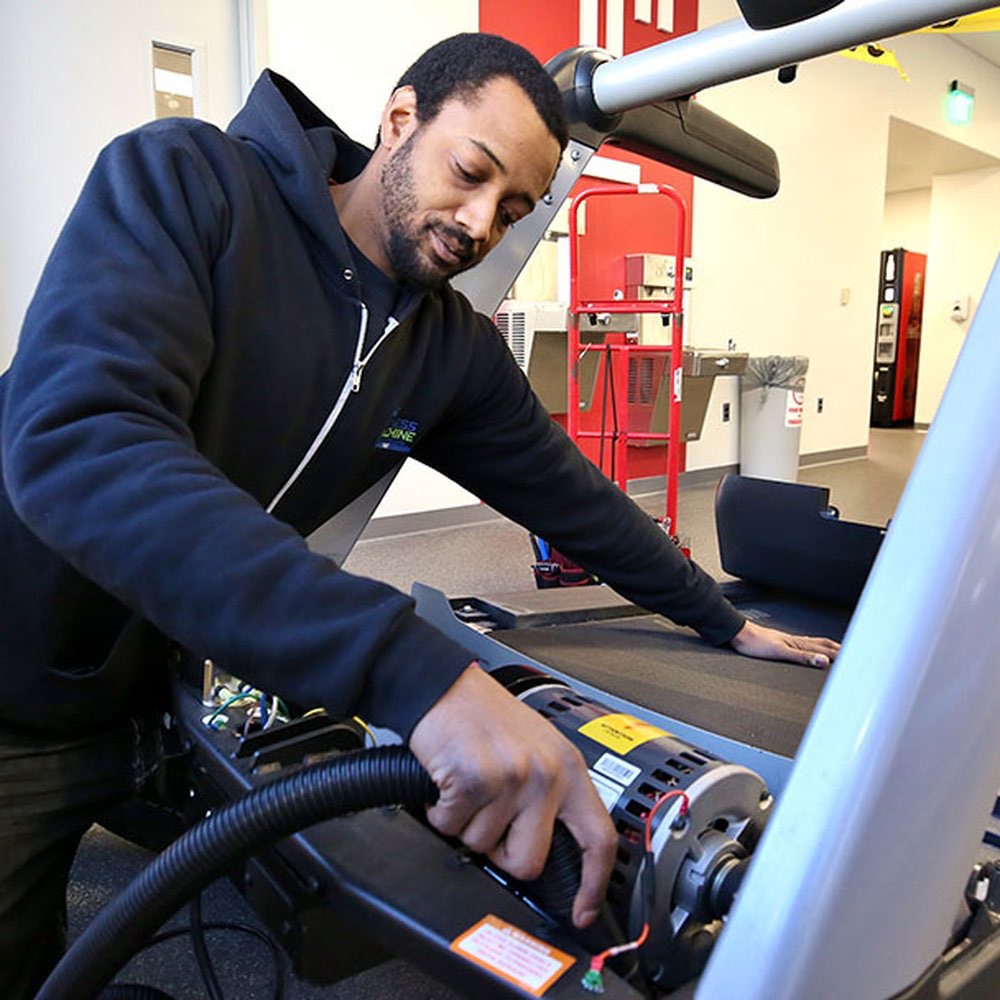
Resolving Sensor and Control Board Issues
If motor and electrical problems are not the cause, the issue might lie with the treadmill’s sensors or control board. Here’s how to diagnose and fix these components.
Diagnosing Sensor Malfunctions
- Identify the Sensors: Treadmills often have various sensors, such as speed sensors and safety key sensors. Locate these sensors on your treadmill.
- Check for Dust and Debris: Dust and debris can interfere with sensor function. Clean the sensors with a soft cloth to ensure they are free from obstructions.
- Test Sensor Functionality: Use a multimeter to test the sensors’ electrical output. Refer to your treadmill’s manual for the correct readings. If a sensor is not functioning correctly, it may need to be replaced.
- Recalibrate the Sensors: Some sensors may require recalibration to function correctly. Follow the manufacturer’s instructions to recalibrate the sensors.
Calibrating or Replacing Sensors
- Recalibration Steps: Follow the specific steps in your treadmill’s manual to recalibrate any sensors. This often involves accessing the treadmill’s settings menu and performing a series of actions to reset the sensors.
- Purchase Replacement Sensors: If a sensor is faulty and cannot be recalibrated, purchase a replacement sensor compatible with your treadmill model.
- Install New Sensors: Replace the faulty sensor with the new one, ensuring it is correctly positioned and connected. Test the treadmill to verify that the new sensor resolves the issue.
Checking the Control Board for Faults
- Inspect the Control Board: Look for any signs of damage, such as burnt components or loose connections. Use a magnifying glass if necessary to inspect closely.
- Test the Control Board: Use a multimeter to test the electrical output of the control board. Compare the readings to the specifications in your treadmill’s manual.
- Replace the Control Board: If the control board is faulty, it will need to be replaced. Purchase a compatible control board and follow the manufacturer’s instructions for installation.
By addressing these sensor and control board issues, you can often resolve the problem of your treadmill stopping unexpectedly. For more workout tips and routines that can complement your treadmill sessions, check out Best Treadmill Workouts for Weight Loss.
Next, we’ll discuss regular maintenance tips to prevent future problems with your treadmill.

Regular Maintenance Tips to Prevent Future Problems
Regular maintenance is essential to keep your treadmill running smoothly and to prevent issues like stopping during use. Here are some practical tips for maintaining your treadmill.
Implementing a Regular Maintenance Routine
- Weekly Cleaning: Dust and debris can accumulate on your treadmill and cause various issues. Wipe down the treadmill with a soft, damp cloth weekly, paying special attention to the belt and deck area.
- Monthly Inspection: Once a month, inspect your treadmill for signs of wear and tear. Check the belt for fraying, the deck for cracks, and the motor for any unusual noises.
- Lubrication Schedule: Follow the manufacturer’s recommendations for lubricating the treadmill belt. Generally, you should lubricate the belt every three months or after 150 miles of use.
- Tighten Bolts and Screws: Vibrations from regular use can loosen bolts and screws. Regularly check and tighten all bolts and screws to ensure the treadmill remains stable and safe to use.
Tips for Extending the Life of Your Treadmill
- Proper Usage: Avoid stepping on the treadmill belt while it’s stationary. Always start the treadmill before stepping on it to prevent unnecessary strain on the motor and belt.
- Weight Limit Adherence: Ensure users do not exceed the treadmill’s weight limit. Exceeding the limit can damage the motor and deck.
- Balanced Placement: Place the treadmill on a flat, even surface to prevent uneven wear on the belt and deck. Using a treadmill mat can help reduce vibrations and protect your flooring.
- Environmental Conditions: Keep your treadmill in a cool, dry place. Excessive heat, humidity, or direct sunlight can damage electronic components and the belt.
For a comprehensive guide on maintaining a healthy lifestyle alongside your treadmill workouts, check out The Hidden Truth: Why Conventional Diets Fail You.
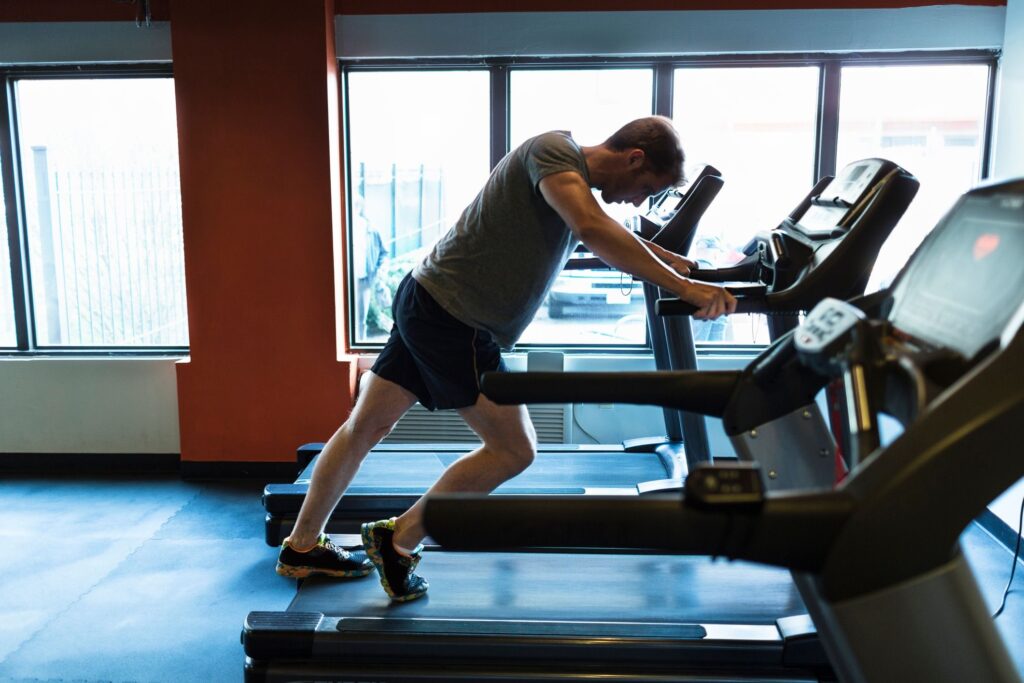
Effective Workouts and Supplements for Treadmill Users
Incorporating effective workouts and the right supplements can enhance your treadmill sessions and overall fitness. Here’s how to make the most of your treadmill workouts.
Incorporating Effective Treadmill Workouts
- Interval Training: Alternating between high-intensity and low-intensity intervals can boost your cardiovascular fitness and burn more calories. For example, jog for one minute, then sprint for 30 seconds, and repeat.
- Incline Workouts: Using the treadmill’s incline feature can simulate uphill running, which increases the intensity of your workout. Start with a low incline and gradually increase it as you build strength and endurance.
- Endurance Runs: Set a steady pace and run for a longer duration to improve your stamina. Gradually increase your running time each week to build endurance.
- Walking Workouts: Walking on the treadmill at a brisk pace can be an effective low-impact workout. Adding hand weights can increase the intensity and help tone your upper body.
For more workout ideas, explore Best Treadmill Workouts for Weight Loss.
Benefits of Pre-Workout Supplements for Enhanced Performance
- Increased Energy: Pre-workout supplements like Cellucor C4 Sport Pre Workout Powder provide a boost of energy, helping you power through intense treadmill workouts.
- Improved Focus: Ingredients like caffeine and beta-alanine enhance mental focus and performance, allowing you to maintain a high intensity throughout your session.
- Enhanced Endurance: Pre-workout supplements can improve your endurance, enabling you to work out longer and achieve better results.
- Faster Recovery: Some pre-workout supplements contain ingredients that aid in muscle recovery, reducing soreness and allowing you to maintain a consistent workout routine.
Additional Fitness Accessories
- Fitness Trackers: Using a fitness tracker like the Fitbit Versa 4 Fitness Smartwatch can help you monitor your heart rate, track your steps, and analyze your sleep patterns, providing valuable insights into your overall fitness.
- Comfortable Footwear: Wearing the right shoes is crucial for preventing injuries and ensuring a comfortable workout. The Under Armour Men’s Charged Assert 9 Running Shoe provides excellent support and comfort for treadmill workouts.
- Music and Motivation: Listening to music or motivational podcasts can make your treadmill workouts more enjoyable. Why Apple AirPods 2nd Gen Are a Must-Have for Fitness Enthusiasts can help you stay motivated and focused during your workouts.
By incorporating these tips and products into your treadmill routine, you can enhance your workouts and achieve your fitness goals more effectively.
Next, we’ll wrap up with a conclusion to ensure you’re well-prepared to keep your treadmill in top condition and make the most of your fitness journey.
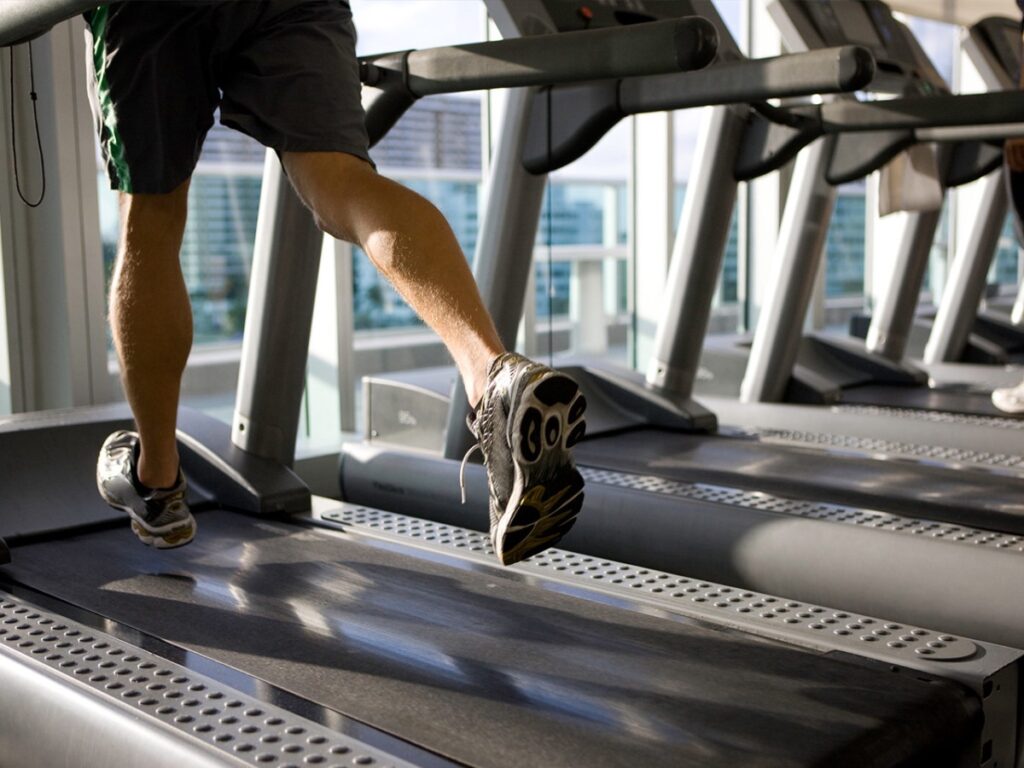
Ensuring a Smooth Running Treadmill
Keeping your treadmill in optimal condition ensures you can enjoy effective and uninterrupted workouts. By understanding the common issues that cause a treadmill to stop when you walk on it and knowing how to address them, you can maintain your treadmill’s performance and extend its lifespan.
Recap of Key Points
- Diagnose the Problem: Identifying whether the issue lies with the belt, motor, sensors, or control board is crucial. Conduct thorough inspections to determine the exact cause.
- Fix Belt and Deck Issues: Ensure the belt is properly aligned, tensioned, and lubricated. Replace worn-out belts to keep the treadmill running smoothly.
- Address Motor and Electrical Problems: Inspect the motor and wiring, replace motor brushes if necessary, and ensure all electrical connections are secure and functioning.
- Resolve Sensor and Control Board Issues: Clean, recalibrate, or replace faulty sensors. Inspect the control board for any signs of damage and replace it if needed.
- Implement Regular Maintenance: Regularly clean, inspect, and lubricate your treadmill. Tighten bolts and screws, and ensure the treadmill is placed on a flat, stable surface.
- Enhance Your Workouts: Incorporate effective treadmill workouts and use supplements like Cellucor C4 Sport Pre Workout Powder to boost your performance. Utilize fitness trackers like the Fitbit Versa 4 Fitness Smartwatchto monitor your progress.
Maintaining your treadmill not only helps you avoid frustrating interruptions but also ensures that you can make the most of your exercise routine. Regular maintenance and prompt troubleshooting can save you time and money in the long run.
For more comprehensive fitness advice and tips on maintaining a healthy lifestyle, explore the following articles:
- The Hidden Truth: Why Conventional Diets Fail You
- Best Treadmill Workouts for Weight Loss
- Best Pre-Workout for Weight Loss
- The Great Weight Debate: Is Lifting Light Just as Mighty as Lifting Heavy?
- Why Apple AirPods 2nd Gen Are a Must-Have for Fitness Enthusiasts
- Breath Watching Meditation: Unlocking the Secrets to Inner Peace
By following these guidelines and integrating useful tools and products, you can ensure your treadmill stays in top shape and continue to support your fitness goals effectively.
As an Amazon Associate we earn from qualifying purchases through some links in our articles.




